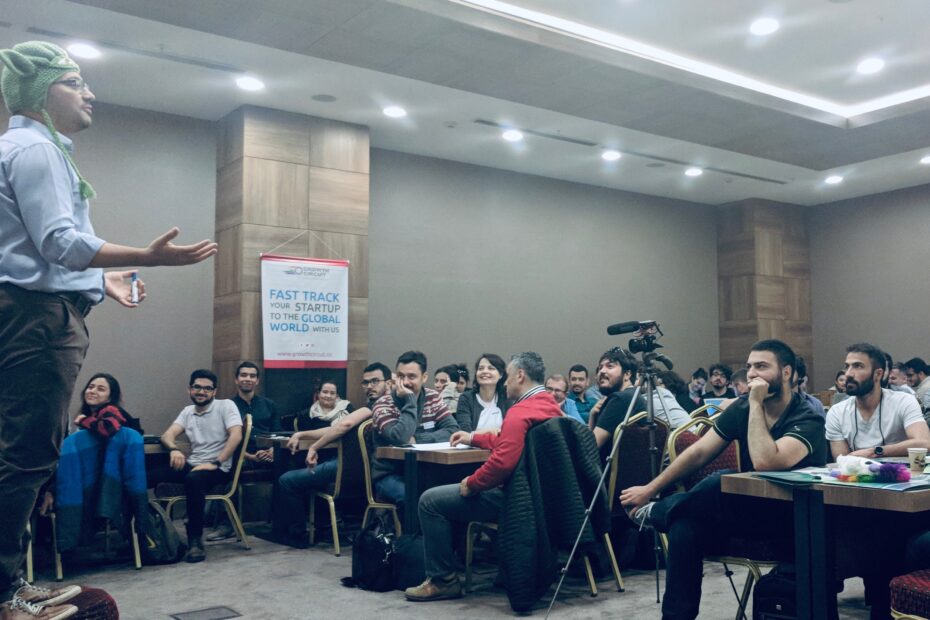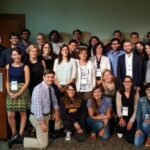“Do or Do not, there is no Try” – Master Yoda
I am quite late to reflect on my experience running the first fully English and International Accelerator in Turkey in partnership with UC Berkeley’s Innovation Acceleration Group; but hey I was trying to get to the ‘inbox zero’ Nirvana. Although I failed at getting the Nirvana of the Inbox Zero, I think I am as close as I can get to ‘We really made a difference’ Nirvana when accelerators are considered.
I will distill the components of this Nirvana for you. First things first: I am writing this piece for 3 different customer archetypes:
(1) Accelerator Manager Sergio, a 2-3 year experienced Accelerator Manager. Lives in an emerging startup ecosystem, in a country where angels are more like sharks, gets funding from government to prove they can build programs and the next SiliconX, cares deeply for success of startups, reads Tech Crunch, Eric Ries and Steve Blanks blog regularly, organizes hackathons (once he finds more money), is sick and tired of copycat ideas, apps, x of y type of clones.
(2) Corporate Innovation Officer Kelly (Americanised name of a Chinese name). She lives in a bigger city, is working for this multinationals’ office in an emerged economy, in charge of pushing the innovation agenda of the mothership, is skeptical about this whole Lean ‘thing’ because it’s against everything she was taught in her overpriced MBA program, wants to make a difference but is afraid to fail miserably and disappoint the managers (and parents).
(3) Startup Founder Mohammed, recently out of college, has built a few ‘projects’ while studying to get his engineering degree, close friends with many engineers and goes to startup events regularly. Doesn’t want to get into a legacy job that his mom or dad will approve, has some savings but not so much he can actually live freely, is interested in IoT devices, smart cities and industry 4.0, has heard about the business model canvas but thinks he can build a great device and then figure out what this canvas thing is.
Let me summarise the top two Nirvana components (Value Propositions) of the Accelerator Program I built with UC Berkeley IAG leaders Mark and Elizabeth. For Sergio: You will need to get experienced mentors like the IAG group to run your programs with because although the content for lean startups is widely available online, the experience of managing a class of 30-40 teams and breaking their ego as well as their stubborn resistance on getting out of the building is difficult. To give you a benchmark of this Nirvana, more than 90% of the teams in the opening weekend bootcamp had done customer interviews during the camp itself even though it was on a weekend. That meant a lot of learnings for the teams and that’s what you should target in the first place. Also, dear Sergio, another Nirvana you may reach is the over 60 Net Promoter Score you will receive once you ask if the batch would advise other startups to join your accelerator. In summary, working with professionals increases your referral rate from existing customers (startups) and increases learning thus reducing zombi-fication of your startups after they graduate.
For Kelly: the biggest Nirvana moment of your corporate innovation journey (if you work hard to remove barriers within the ivory towers of your company) will come when one Research and Development Engineer (that has a PhD) comes back to you after the bootcamp and tells you that he actually managed to speak to sales managers in your own company. Don’t get me wrong, that engineer has spoken with other company professionals before, of course, but he had no clue how the sales cycle at your company worked in reality (against all the red tape, saboteurs and real buyers). Another Nirvana you will reach by following the methodology with IAG, which will make you more ecstatic, is that one of more of your teams will come to you and tell you that through customer discovery and rigorous value chain analysis, they have actually made saved your company a few million dollars by not continuing some long-lasting legacy product feature development. On the contrary, they have already received pre-orders for the new software the team put together in 2 weeks as a prototype from existing customers. You can safely start dreaming about the corner office now; well done!
For Mohammed: I have good, and better news for you brother. Your initial team is now history, you made the right choice by not including your roommate in your new company because he continuously declined your requests to join the customer interviews assuming he knows everything there is to know. Better now than later. The better news is you really have discovered a repeating problem in the industry you targeted with your IoT Device, and the solution is even simpler than what you had built. You also were able to find the repeatable way to get and retain customers with certain channels and quickly test the CAC (customer acquisition cost) and LTV (lifetime value) as well as your TAM SAM SOM. That will surely impress some of the early stage angels and definitely impact your bank balance since you are now a “go” with your business.
For those who are reading this small article, if you were in the customer archetype I described and understood the types of Nirvana’s I described, it will mean I did my MVP right. If you were not in the customer archetypes I intended this piece to be understood by, below is my attempt to make more sense for you.
The methods and programs IAG has used, developed and improved will help seed funds or accelerators like us (Growth Circuit) make a long-lasting impact in startups’ understanding of market and product risks and eventually reduce the failure rates of your startups. The expertise and brutal mentorship your startups will receive, will be highly appreciated by most of your startups and you will be able to clearly choose which founders are coachable and which ones are just building technology for fun and omit them from your portfolio. If you are running a company-wide initiative or a product development division worried about the go-to-market process you will receive a structured method to identify the gaps in the product offering and find a better value proposition or simply quit building the wrong thing for the wrong customers and probably build a better future for your company.
Sounds like it is a good pursuit, reaching towards these Nirvana moments, right?
Thank you, Mark and Elizabeth, for your continuous pursuit of helping the teams move the needle and get the heck out of the building to build things other people want. Grateful for our partnership and friendship.




